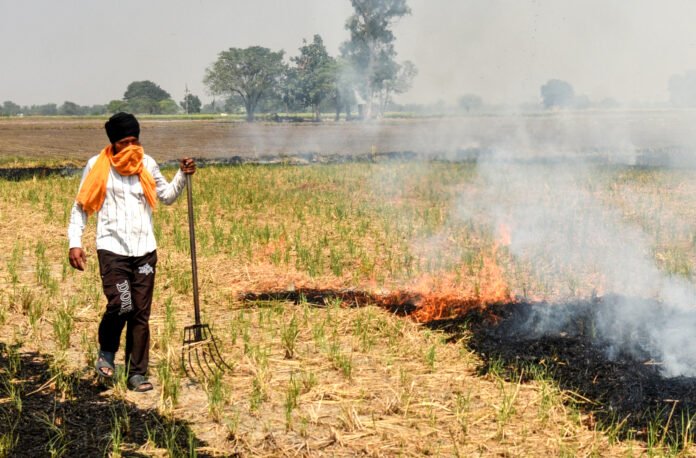The early‑October floods that swept through Punjab and parts of Haryana in 2025 have had an unexpected side effect: the rains flooded farmers’ fields and made it hard to dry crop residue, so stubble‑burning—one of the biggest sources of Delhi’s winter haze—was cut back by more than three‑quarters.
Experts say this dramatic drop in farm fires is linked to a noticeable improvement in air quality over the National Capital Region (NCR). In Delhi, the average concentration of fine particulate matter (PM2.5) for the first 12 days of October was 51.5 µg/m³ in 2025, down 15.5 percent from 60.8 µg/m³ in the same period last year. Although Delhi‑wide PM2.5 levels still exceed the safe limit of 50 µg/m³, the reduction shows how much stubble burning contributes to the city’s choking air.
Why stubble burning matters
A single piece of fine dust—particles 2.5 microns or smaller—can linger in the atmosphere for weeks and travel hundreds of miles. Farmers in Punjab and Haryana usually burn leftover paddy straw in the middle of winter, creating dense smoke that carries into Delhi. That smoke adds to pollution already generated by traffic, factories, and dust stirred up by dry winds.
When the floods flooded fields, farmers couldn’t gather dry straw to burn. The result: total stubble‑burn incidents fell from 779 last year to just 175 in the same 12‑day window in 2025—about a 77‑plus‑percent reduction. Punjab’s drop of 73 percent and Haryana’s near‑80 percent cut dominated the data.
Air quality still faces other challenges
Despite the big drop in agricultural fires, Delhi’s average PM2.5 stayed above 50 µg/m³. That signals a steady background load from non‑agricultural sources: vehicular emissions, industrial activity, and dust resuspension. Researchers say that tightening controls on stubble burning is essential, but it is only one piece of the puzzle. Long‑term improvement will require cleaner road fuels, stricter factory emissions, and better city‑wide pollution‑control measures.
What the floods teach us
The 2025 floods were an unintentional experiment that highlighted the connection between upwind fire activity and Delhi’s winter haze. With no new policies or enforcement actions, just the natural intervention of flooding, Delhi saw cleaner air. The study underscores that while stubble burning can be curtailed quickly with weather or regulation, sustainable air quality gains demand a coordinated, multi‑sector effort.
Key numbers
- Punjab stubble fires: 392 in Oct 1‑12, 2024 → 105 in 2025 (73 percent drop).
- Haryana stubble fires: 387 in Oct 1‑12, 2024 → 70 in 2025 (81 percent drop).
- Delhi PM2.5 levels Avg. 60.8 µg/m³ (Oct 2024) → 51.5 µg/m³ (Oct 2025) (15.5 percent drop).
The flood‑driven decline in stubble burning offers hope that aggressive action against agricultural fires can create noticeable, immediate benefits for Delhi’s air quality—if joined by broader clean‑air initiatives.
Source: ianslive
Stay informed on all the latest news, real-time breaking news updates, and follow all the important headlines in world News on Latest NewsX. Follow us on social media Facebook, Twitter(X), Gettr and subscribe our Youtube Channel.



